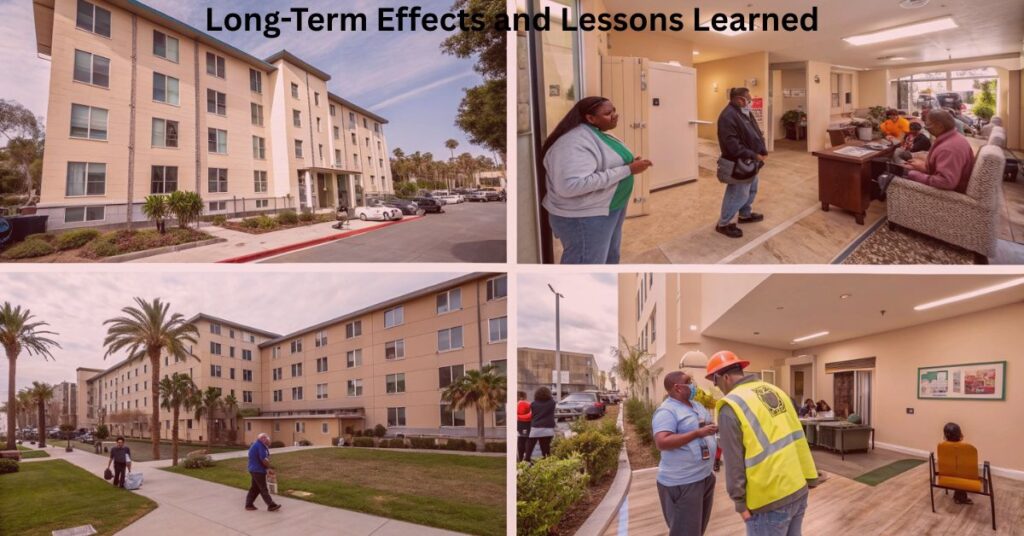The Doge HHS Migrant Housing Contract is one of the most talked about agreements in recent years. This government-based housing contract was made to support migrant children and families during emergencies. However, many questions were raised about how the contract was handled, what went wrong, and what lessons were learned. In this article, we will take a close look at what the Doge HHS Migrant Housing Contract means, how it works, what the key issues were, and how those problems were solved.
You’ll also learn about the structure, real-time challenges, and long-term impact of this contract on public resources and housing management. We will explain everything in easy words, without technical language, so you can understand the full picture clearly. If you’re someone who wants to know the facts and wants a human-based analysis, this article is for you. Let’s explore the Doge HHS Migrant Housing Contract together.
A contract worth millions but used for an empty shelter. Find out why.
Introduction and Background of Doge HHS Migrant Housing Contract
The Doge HHS Migrant Housing Contract was created to provide emergency housing for migrant children and families. It was a government-supported effort, and the contract was handled by the Department of Health and Human Services (HHS). The main aim was to build and maintain housing centers in case of a sudden increase in migrant arrivals.
This contract caught public attention when reports showed that one of the housing centers remained empty for months, yet millions were being paid every month. The concern grew when people realized that the money was going to waste. This article will go deep into the Doge HHS Migrant Housing Contract to explore what really happened.
What Is Doge HHS Migrant Housing Contract?

The Doge HHS Migrant Housing Contract is a housing agreement made between the government and private contractors. The purpose of this contract was to set up housing units that could be used during emergencies when many migrant children and families entered the country without shelter.
Under this contract, housing units were built quickly using modular materials. These shelters included medical support, food supplies, sleeping areas, and basic facilities. The goal was to keep children safe and provide short-term housing until proper arrangements could be made.
How Doge HHS Migrant Housing Contract Works
This contract worked through a private company that received government funds. The process was something like this:
- The government approved the contractor.
- A fixed monthly payment was set regardless of how many people stayed in the shelter.
- The shelter was required to be ready at all times, even if it stayed empty.
- Payments were made regularly for “standby” or “cold status” readiness.
This means that even if the shelter was not being used, the contractor still received full payments to keep the shelter ready for possible use.
Common Problems in Doge HHS Migrant Housing Contract
Many people raised concerns when they saw the actual working of the Doge HHS Migrant Housing Contract. Some of the biggest problems included:
- Empty Shelter Payments: One housing facility remained empty for over three months, yet full payments were made.
- No Competitive Bidding: The contract was given without open competition, which raised fairness questions.
- High Costs: The monthly cost was very high for just keeping a place “ready.”
- No Transparency: There was very little public information about how funds were being used.
- Data Access Issues: The contractor had access to personal information of migrant children, which created privacy concerns.
These problems showed a serious need for more monitoring, transparency, and responsibility.
How These Problems Were Solved
After media reports and public complaints, several actions were taken to fix the issues in the Doge HHS Migrant Housing Contract. Here’s how the problems were addressed:
- Contract Cancellation: The contract for the empty shelter was canceled to stop the waste of public funds.
- Review Committees: Special review teams were created to look into all details of the agreement.
- Policy Change: New rules were added to make sure future contracts go through proper bidding.
- Transparency Boost: The government decided to publish more details about such contracts for public review.
- Privacy Control: Stronger privacy policies were introduced to protect the personal data of migrant children.
These actions helped to reduce waste and build more trust in how public money is used.
Long-Term Effects and Lessons Learned

The Doge HHS Migrant Housing Contract taught us several important lessons:
- Preparedness Is Important: Emergency housing is needed, but it must be planned wisely.
- Oversight Is Essential: Every contract should be reviewed regularly to avoid misuse of funds.
- Cost Should Match Use: Paying millions for an unused facility is not smart budgeting.
- Ethics Matter: Children’s safety and privacy should always come first.
- Public Involvement Helps: When the public is informed, better decisions can be made.
This contract can now serve as an example for how to improve future housing plans.
Rebuilding Trust in Public Contracts
Instead of just talking about advantages or disadvantages, let’s talk about rebuilding public trust. People expect that their tax money will be used for real needs, not wasted. Trust can be rebuilt by:
- Being open about how much money is being spent.
- Making sure the shelters are used as planned.
- Giving updates to the public regularly.
- Making rules for how contractors are selected.
- Keeping children’s safety and rights above all else.
When people see fairness, transparency, and care, trust automatically grows.
Frequently Asked Questions (FAQs)
Q1: What was the goal of the Doge HHS Migrant Housing Contract?
The goal was to provide emergency shelter for migrant children and families during crisis situations.
Q2: Why did people criticize the contract?
People criticized it because millions were spent on shelters that were never used.
Q3: Was the contract canceled?
Yes, the contract was canceled after reports showed wasteful spending.
Q4: Did the contractor misuse data?
There were privacy concerns due to access to personal information, and new rules were later added to protect data.
Q5: What changes were made after the issues came to light?
Changes included contract cancellation, better monitoring, new privacy rules, and improved public reporting.
Strong Conclusion
The Doge HHS Migrant Housing Contract started with a good purpose—to protect children in need. But poor planning and lack of control led to major problems. This case reminds us that even helpful plans must be managed with care. Spending public money comes with responsibility. When shelters stay empty and money keeps flowing, people lose faith.
In the future, all such contracts must be fair, open, and smart. The focus should always remain on the real needs of people, not just the paperwork or payments. The Doge HHS Migrant Housing Contract can now serve as a powerful reminder: help is good, but only when it truly reaches the people who need it.
Also Read
A Complete Guide to tamrielleveledregion.esp – Make Your Elder Scrolls Game Better
Discover the Power of 7zvu187: A Complete Guide Based on Real-Life Use
Çeiri – A Beautiful Way of Life That Connects Us to Our Roots
